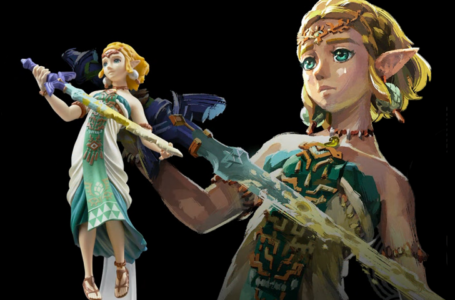Blissful Death: getting technical with Space Moth: Lunar Edition
Space Moth DX is, to my shame, one of those games that I’ve had in my digital library for a long time, but which I’d never really gotten around to spending any time with. So I decided that once Strictly Limited’s physical Switch release of the game’s enhanced version Space Moth: Lunar Edition plopped through my letterbox, I would give it some proper time and attention.
Well, it’s here and it’s, uh… it’s really good. Now I clearly need to make up for a lot of lost time… and get back my very rusty bullet hell skills that I appear to have let languish for far too long!
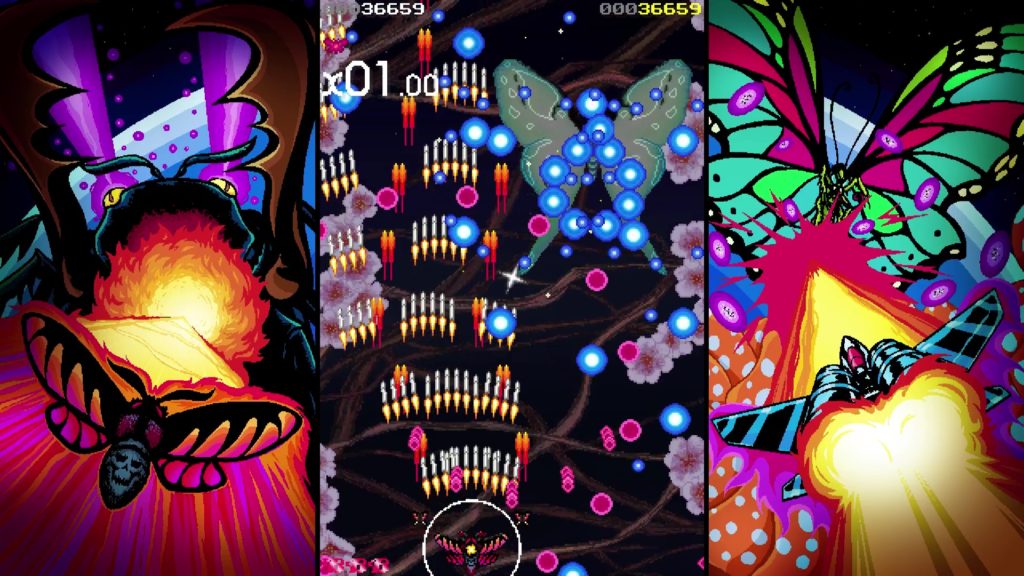
For the unfamiliar, Space Moth: Lunar Edition casts you in the role of a Space Moth who, for some reason, desires to go to the Moon — and not in an insufferable cryptobro sort of way, we mean literally to the moon. Unfortunately, a horde of laser-spitting giant insects stand between Space Moth and a lunar adventure, so there’s only one thing for it: spit lasers right back at them!
Yes, this is a game where, in true shoot ’em up tradition, the narrative emphatically does not matter. What does matter, however, is the mechanics. And this game is absolutely rock solid on that front — all the more impressive when you consider that the original version of Space Moth was developer 1CC Games’ first release.
Space Moth is a bullet hell game that was originally designed to be a relatively gentle introduction to this challenging subgenre — though the Lunar Edition has bumped up the challenge factor somewhat. For those unaccustomed to shoot ’em up parlance, this means that the game has a strong emphasis on avoiding very elaborate and aesthetically pleasing bullet patterns while attempting to score as many points as possible, usually via a fairly elaborate scoring system. Survival is, of course, challenging, but the real mastery of bullet hell games typically comes from understanding how to nail the big points.
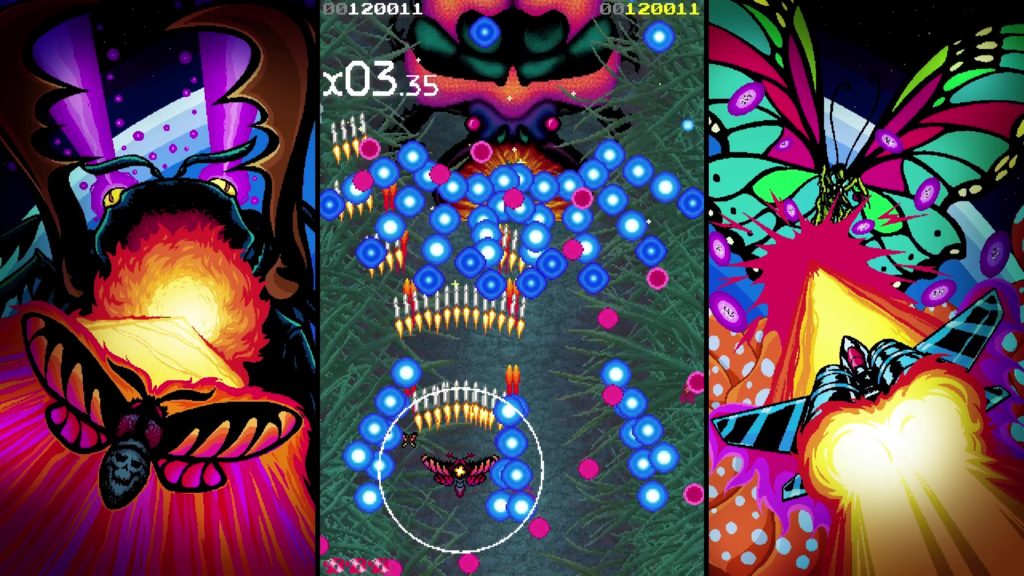
In Space Moth: Lunar Edition, we have a somewhat Cave-inspired setup, where Space Moth is equipped with both a less powerful wide rapid shot and a more powerful focused laser. You also have a stock of bombs to use, but unlike many other bullet hell titles, these cannot really be used for “panic bombing” to get you out of trouble, since it takes a moment to actually “drop” them rather than them simply exploding immediately.
Core to Space Moth: Lunar Edition’s scoring mechanic is the idea of “soul draining” enemies with the rapid shot. This causes them to become dark with neon highlights and make a distinctive sound; destroy them at this point and they’re not only worth more points, but they also add considerably to a circular area that gradually grows around Space Moth as you use the rapid shot.
When the circular area is large enough to become transparent rather than solid, you can hit a “special” button to trigger a special mode in which you’re shielded from bullets by the circular area; any bullets that enter the area turn into skulls, which in turn add to a score multiplier. However, this “shield” effect doesn’t last forever; the circular area gradually shrinks and eventually disappears, and it takes a short while to reappear again — even longer to get it back up to its maximum size.
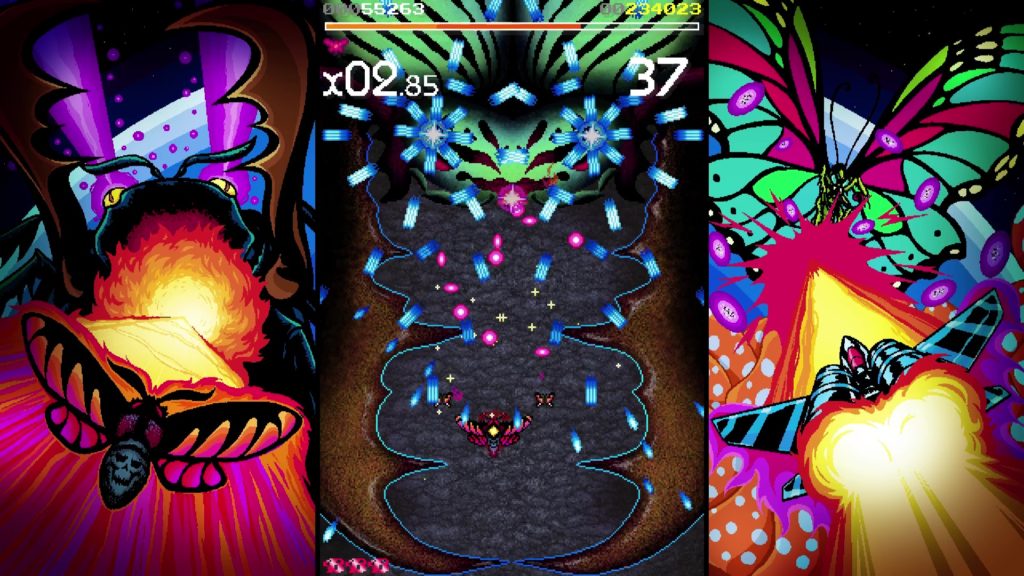
There are two different “ships” to use in Space Moth: Lunar Edition, and both implement this “special” function slightly differently. The default Space Moth player has a slightly smaller maximum possible size for the circular special area, but said area follows you around once triggered. The other ship, meanwhile, has a larger maximum size for the circular area, but instead plops it at a static location on screen when you hit the “special” button. This requires markedly different tactics to use effectively.
As is hopefully clear from that description, success in Space Moth: Lunar Edition is dependent on making good use of this mechanic, because it not only helps keep you out of danger during the most intense bullet patterns, it also helps you score big points.
You are, of course, free to ignore the scoring system entirely if you just want to concentrate on surviving the game’s stiff challenge, but the beauty of the game’s mechanics are that effective use of the special shield is integral to surviving — part of learning the game’s five stages very much involves figuring out the optimal times to trigger it.
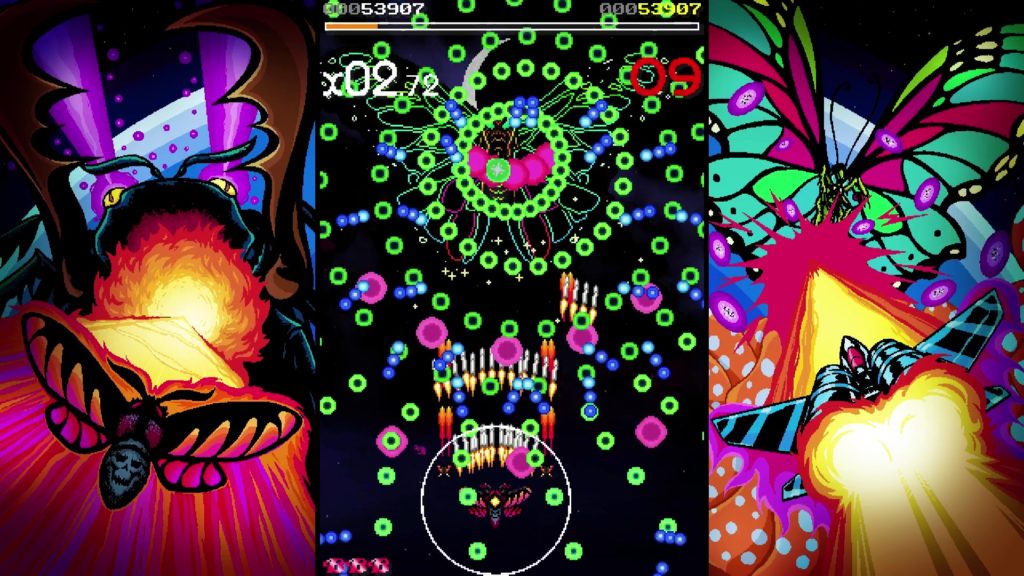
So the mechanics are good, and the game is presented extremely well. Much like 1CC Games’ other excellent shoot ’em up Star Hunter DX, the game makes use of a well-implemented pixel art style that is deliberately not trying to pay homage to classic gaming hardware; it is instead simply trying to be good, modern pixel art that looks great on modern displays.
The developers boast of making a point of trying their games on CRTs and deliberately eschewing both mixed-resolution assets and flashy shader effects — and it really works. Space Moth: Lunar Edition definitely has a distinctive look to it — and it feels pleasingly consistent throughout its entire presentation. There are a number of other modern shoot ’em up developers who could stand to learn something from this consistency of presentation — if you’re going to make a pixel game, commit to it, dammit!
Like the visuals, the backing music deliberately steers clear of retro gaming-inspired sounds, instead adopting a somewhat synthwave-style feel that 1CC Games claim is “less NES chiptune or Amiga tracker and more Tangerine Dream”. An accurate description, I’d say; while it arguably lacks the relentless energy of some other shoot ’em up soundtracks, it certainly fits the action well and definitely aids with that feeling of getting “in the zone” that a good shoot ’em up always creates.
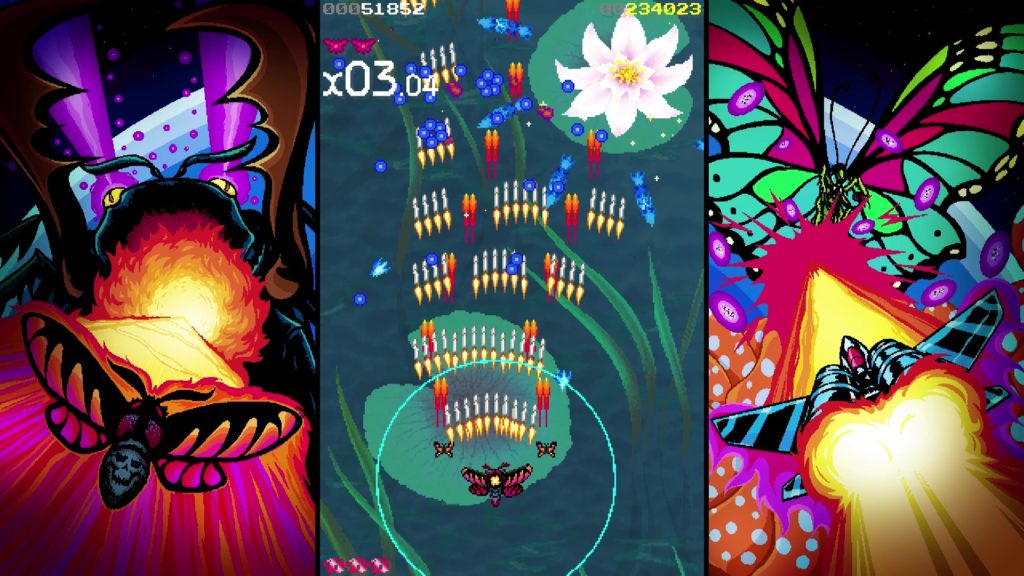
Space Moth: Lunar Edition perhaps isn’t quite as accessible as its stablemate Star Hunter DX; a passing familiarity with bullet hell games (particularly Cave’s games) is definitely helpful going into this one, whereas Star Hunter DX definitely feels like a good introductory shoot ’em up in general. But Space Moth is also pitched at a difficulty that doesn’t feel entirely insurmountable, even for relative newcomers.
The special shield system works well as a means of taking the pressure off at regular intervals, and the fact the “soul drain” system is pretty much optional to engage with means that most players can focus on enjoying the game in the way they’re most comfortable with.
It would have perhaps been nice to see some discrete difficulty levels — and it definitely would have been great to see online leaderboards — but if you’re a shoot ’em up fan and you pick this one up, you’re going to have, if you’ll pardon the expression, a blast.
Space Moth: Lunar Edition is available now for PC, Nintendo Switch, PlayStation 4/5 and Xbox One/Series whatever.
Join The Discussion
Rice Digital Discord
Rice Digital Twitter
Rice Digital Facebook
Or write us a letter for the Rice Digital Friday Letters Page by clicking here!
Disclosure: Some links in this article may be affiliate links, which means we may earn a small commission if you make a purchase after clicking on them. This is at no additional cost to you and helps support Rice Digital!
- Letter from the Editor: passing the torch - June 30, 2023
- Super Woden GP 2 is looking promising - June 30, 2023
- Inti Creates is making a 32 bit-style Love Live action platformer - June 26, 2023







